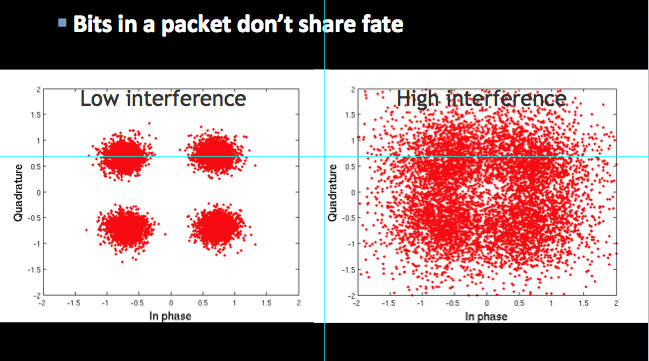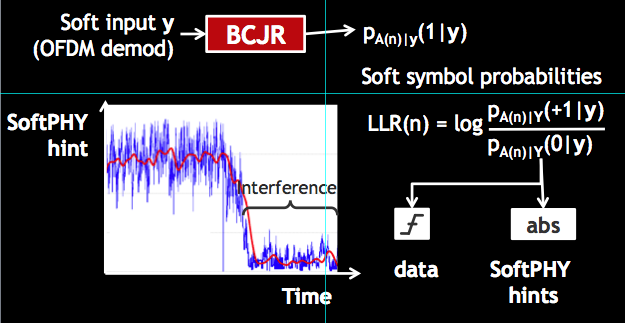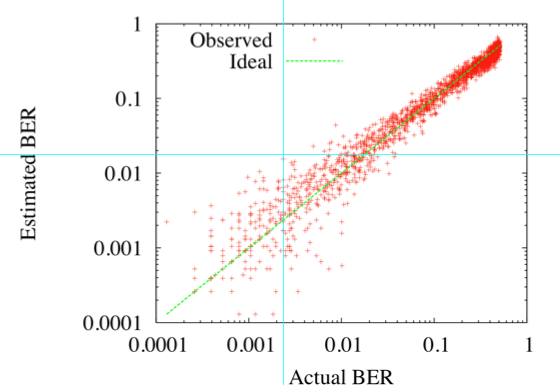
Wireless networks are becoming an important mode of high-speed Internet access. In addition to the widely used wireless LANs (e.g., 802.11) and cellular data networks, wireless mesh networks are emerging as an attractive way to bring broadband connectivity to parts of the country and the world poorly served by wireline providers. In addition, an increasing number of sensor networks rely on multi-hop packet forwarding through radio-equipped nodes.
The performance of wireless networks in practice, however, is often disappointing, and worsens with increasing demand. We believe that argue that rethinking traditional network layering---both the interface between layers and the implementation of each layer---can improve throughput by as much as an order of magnitude. The idea behind the bit-switched wireless networking project is to develop such a network architecture. The building block we propose is a new contract between the physical (radio) layer and higher layers, called SoftPHY. We are developing a variety of new higher-layer algorithms and protocols that can use this contract.

The SoftPHY abstraction is simple: in addition to passing a set of bits from the physical layer (PHY) to the link layer, the PHY annotates each received bit with its confidence in the decoding decision. This idea resembles so-called soft decision decoding, but the big difference is that the annotation isn't just used inside the PHY to construct the best decoding of the bits, but is passed upward. It turns out that higher layers can use this information in a variety of ways that improve the performance of the network in significant ways.
A network using the SoftPHY abstraction looks different from today's networks that use the "classic packet" abstraction. In current wireless networks, a packet is the atomic unit of packet forwarding and error/loss recovery. A network itself is made up of a number of low error-rate links, with the general recommendation being that one should run links at a bit-error rate (BER) of one to ten parts in a million or so. The reason is that this BER corresponds to a packet loss rate that is tolerable for Internet applications. In this model, the link layer delivers only fully correct packets to the network layer. In addition, it uses some sort of rate adaptation algorithm to pick the "best rate", typically using packet loss rates as an indicator of the current rate not working well.
There are three problems with the "classic packet" abstraction for wireless networks:

A bit-switched wireless network allows a much higher degree of interference on links than is done today, and these links can run at much higher BERs possibly as high as one part in a hundred or more. Because we are able to deduce, with high probability, which parts of a packet are likely correct and which aren't, using techniques that operate at the PHY receiver, the annotated confidences can be used by higher layers in different ways.
The SoftPHY implementation itself depends on the details of the PHY, but our interface to higher layers is independent. That allows higher layer protocols to operate atop a variety of radios, preserving the benefits of layering.
We have developed SoftPHY for spread spectrum PHY radios (Zigbee, 802.11b) and OFDM (802.11a). It is able to predict errors well, as shown in the picture below (obtained from our 802.11a-like OFDM implementation).


Collaborators: Dina Katabi, Sachin Katti.